
Christie's London
Agatha Christie's London connections date back to childhood trips to visit her family. In adulthood, this is where she and Archie set up their first home together. Agatha witnessed London transform over the decades, from the restrictive Victorian society, through to the carefree Swinging Sixties. London’s decadent nightlife, its opulent, luxury hotels and its vibrant streets are evocatively captured in many of her best-loved stories.
Childhood Visits to the Capital
Young Agatha delighted in her frequent visits to West London, to stay with her beloved Auntie Grannie. In An Autobiography, she proclaimed that “Ashfield was home…Ealing, however was an excitement.” By the early twentieth century, this once quiet, rural village had been transformed and was known as the Queen of the Suburbs, offering an easy commute into central London. For Agatha and Auntie Grannie this provided numerous London adventures. They attended lavish productions at famous West End theatres, and were thrilled by trips to huge shopping emporiums.
In 1901, on the first day of the running of the new electric tram service in Ealing, an eleven-year-old Agatha penned a four-verse poem to mark the occasion. It was published in a local newspaper and it was the first time that Agatha had her words in print. Many years later she was still able to recall the first verse:
When first the electric trams did run,
In all their scarlet glory,
‘Twas well, but ere the day was done,
It was another story
Agatha sits her Exams
During the First World War, Agatha studied to become a qualified pharmaceutical assistant. She had to be awarded the Examination for Assistants before she could legally dispense medicines. Agatha sat her exams at the Apothecaries’ Hall, the oldest surviving livery hall in the City of London, dating from just after the Great Fire of London of 1666.
In 1917, in the imposing, wooden panelled Great Hall, Agatha sat her exams, just as medical students still do today. Of the three papers, she passed the two oral exams in Chemistry and Materia Medica (the properties of substances used in medicine). Unfortunately, she didn’t reach the pass mark in the Practical Pharmacy exam, and she returned to the Hall a couple of months later to re-sit it. Agatha was successful and she returned to Torquay to work with dangerous poisons.
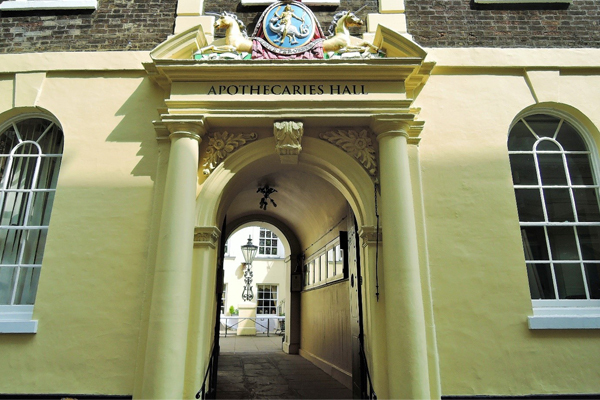
Agatha’s Homes
During the First World War, Agatha and Archie had married. In 1918, Archie started work at the Air Ministry in London. The young couple set up their first home together, renting a flat in leafy St John’s Wood, north London. Agatha lived in several London residences during her lifetime. She had a real passion for houses, which developed from her childhood joy of playing with her doll’s house. She proclaimed that:
I can see quite plainly now that I have continued to play house ever since. I have gone over innumerable houses, bought houses, exchanged them for other houses, furnished houses, decorated houses, made structural alterations to houses. Houses! God bless houses!
By the late 1920s, Agatha was an established and successful author, and divorced from Archie. She used her income to independently purchase 22 Cresswell Place, Chelsea. While Agatha went on to purchase and re-sell several other London properties, she never sold this home. The tiny, almost doll-size proportioned house, is tucked away down a quiet, narrow, cobble-stoned lane, with other similar properties. Mews houses were originally built as the stables and coach houses, to accommodate the horses and carriages for the nearby grander town houses. Agatha recollects:
When I bought it it had stables still, with the loose-boxes and manger all round the wall, a big harness-room also on the ground floor … A ladder-like stair led to two rooms above… With the help of a biddable builder it had been transformed… The harness-room was turned into a garage... Upstairs the bathroom was made splendid with green dolphins prancing round the walls and a green porcelain bath; and the bigger bedroom was turned into a dining-room, with a divan that turned into a bed at night
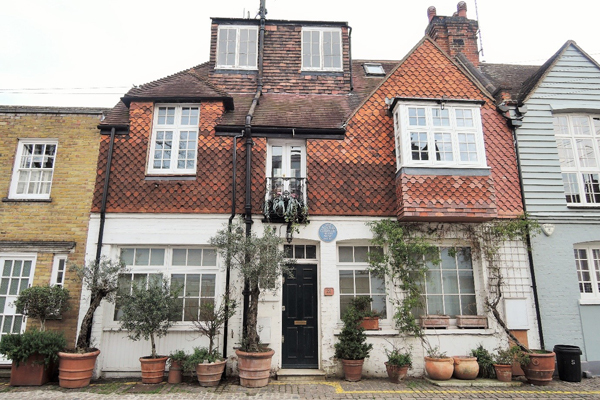
After Agatha married Max, they spent most of their time in London and later moved into 58 Sheffield Terrace, Notting Hill. She was captivated by the white stuccoed, detached house from the moment she first saw it. This was the first and only time Agatha had her own work room, where she could write undisturbed. She purchased a Steinway grand piano which stood in pride of place in her room, and now graces the Drawing Room at Greenway.
During the Second World War, Agatha lived alone at Lawn Road Flats, Hampstead (also known as the Isokon Flats) while Max was posted overseas. When the stylish Modernist building opened in the 1930s, it was seen as the height of modernity for urban living, and attracted several Masters from the Bauhaus school in Germany. It is now listed Grade I. While the flats themselves were small but functional, residents such as Agatha, enjoyed the sociable, communal living offered by the on-site Isobar restaurant and the surrounding woods. While Agatha was living there so too were several spies, who actively worked for the Soviet Union. Nowadays, the Isokon Gallery, in the building’s former garage, tells the story of the building’s many famous, previous residents.
Agatha’s Favourite Hotels
Many of London top luxury hotels have graced the pages of Agatha’s stories thinly disguised. In At Bertram’s Hotel the London hotel where Miss Marple stayed, the hotel itself is one of the characters in the book. Reportedly Brown’s Hotel in Mayfair was the inspiration for Bertram’s, as Agatha was a regular visitor there. Brown’s Hotel certainly fits the pedigree. James Brown, its founder, opened the hotel in 1837, the same year that Queen Victoria ascended the throne. It originally consisted of one building, and over the years the hotel expanded as the adjacent properties were purchased, which gives it the deceptive appearance of being just another row of elegant, Georgian townhouses. The interior optimises understated, quintessentially British luxury. The many period features provide a sense of timelessness and afternoon tea is still served in the original wooden panelled Drawing Room, just as when Queen Victoria and Queen of Crime visited.
Claridge’s in the heart of Mayfair, is the hotel of choice for some of Agatha’s best loved characters. The hotel’s imposing red brick façade was designed by C. W. Stephens, who also worked on Harrod’s department store. Claridge’s interior pays homage to sophisticated glamour of art deco complete with its Lalique panels which could have come straight out of the dining car of the Orient Express. It was here Agatha came to attend the after-party of the premiere of the 1974 film version of Murder on the Orient Express.
The Ritz, on Piccadilly, appears in several of Agatha’s stories as both the Ritz and the Blitz Hotel. Opened in 1906, by hotelier César Ritz, the famous hotel has become a byword for glamour and opulence. Resembling a French chateau with a rococo interior, with impressive Louis XVI décor with dramatic staircases, sparkling chandeliers, huge mirrors reflecting the light, antique furniture down to the finest china. The Ritz was indeed a fitting location to celebrate the publication milestone of Agatha’s 50th Novel, A Murder is Announced.
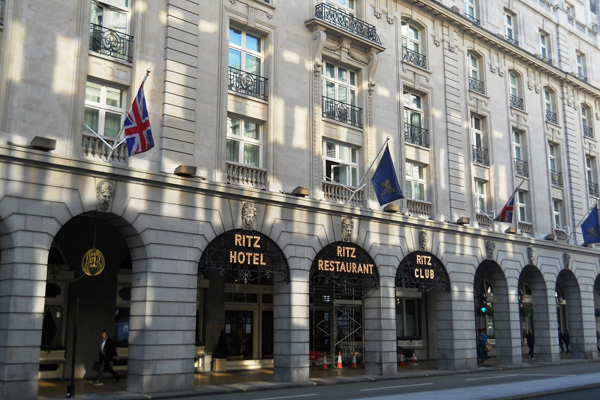
The Savoy Hotel, on Strand, not only featured in her writing, but was chosen by Agatha as the venue for the opening night party for the original stage production of Witness for the Prosecution. The hotel’s theatrical credentials go back to its first owner Richard D'Oyly Carte, the impresario behind the Gilbert and Sullivan opera productions. The hotel continues to make a bold statement with its combination of classic Edwardian features and art deco style. Over the decades, The Savoy has hosted many legendary Mousetrap parties to celebrate its numerous milestones, including when it became the world’s longest running play. The Mousetrap party tradition is that its elaborately decorated cake is cut with a sword.
Christie on Stage
Agatha loved the theatre as both an avid theatre goer and a successful and prolific playwright. As well as The Mousetrap being the world’s longest-running play, she also remains the only female playwright to have ever had three productions on simultaneously in London’s West End.
St Martin’s Theatre has been the home of The Mousetrap since 1974, when it transferred from its next-door neighbour, The Ambassadors. To ensure the show maintained its continuous run, everything was moved over into St Martin’s after the Saturday evening performance for the show to open in its current location on the Monday. The French-style clock on the mantlepiece is the only surviving stage prop from the original production. The theatre’s iconic neon sign proclaims the length of its run. Every year as the show reaches a new milestone, James, pictured, is responsible for changing the numbers. He recalls his father installing the original lighting and his family have maintained it ever since. [The show plans to re-open in October 2020.]
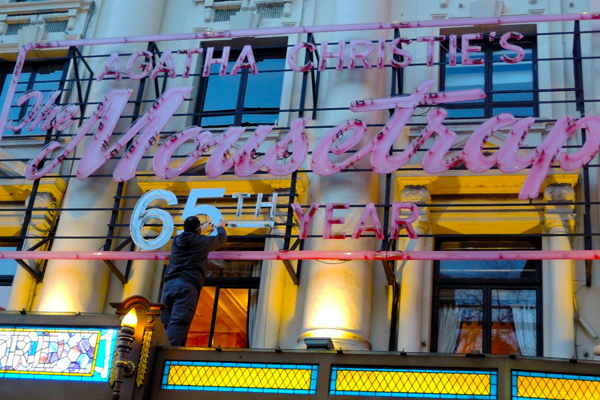
Witness for the Prosecution originally started out as a short story, which later Agatha adapted into a play. It was reputedly her favourite of all her plays. The latest production [which is currently closed due to the pandemic] is in the unique setting of a former Council Chamber, whose original layout resembles a courtroom. County Hall, built as the headquarters of the former London County Council, has a prime location on the South Bank of the River Thames, next to the London Eye.
The Agatha Christie Memorial
Agatha’s memorial by Ben Twiston-Davies is in the shape of a large leather-bound book, with an oval opening in which there is a bust of Agatha. Along the bottom are rows of smaller books, with the names of several of her books written on the spine in different languages including braille, a reminder that her work has been extensively translated. The artwork contains a number of Christie motifs including Hercule Poirot, Miss Jane Marple and the Orient Express.
A fitting legacy for the Queen of Crime from London to Agatha who is loved the world over.
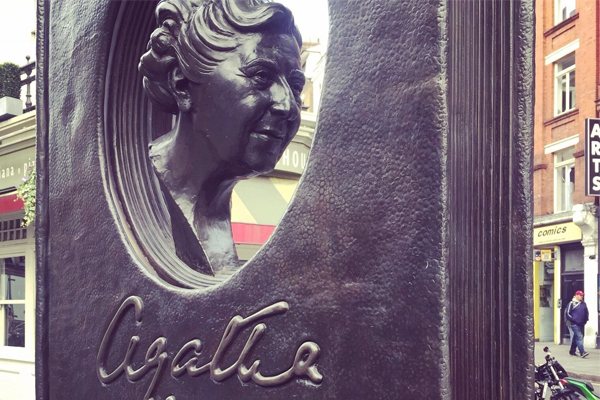
Fancy an armchair travel activity? Create your own luggage tag using one of these addresses!
Agatha Christie’s London Addresses
Agatha’s Homes
(All private residences, exteriors street views only)
22 Cresswell Place, Chelsea, SW1O
58 Sheffield Terrace, Notting Hill, W8
Isokon Flats, Lawn Rd, Hampstead, NW3 2XD (The Isokon Gallery is next door)
Hotels
Brown’s Hotel, Albemarle St, Mayfair, W1S 4BP
Claridge’s, Brook Street, Mayfair, W1K 4HR
The Ritz, 150 Piccadilly, St. James's, W1J 9BR
The Savoy Hotel, Strand, WC2R 0EZ
Theatres
St Martin’s Theatre, West Street, WC2 – for The Mousetrap (back row of the dress circle is step free)
County Hall, Belvedere Road, SE1 – for Witness for the Prosecution (back row of the stalls is step free)
Bonus Itinerary
Apothecaries’ Hall, Blackfriars Lane, EC4V 6ER Agatha Christie Memorial - on the junction of Cranbourn Street, WC2 and Great Newport Street, WC2
Written by Tina Hodgkinson, a long time Christie enthusiast, who works at the London Metropolitan Archives and is a qualified London tour guide.
Discover more

The Mousetrap: A puzzle
Recreate the scene outside Christie's longest-running show The Mousetrap

Christie's England: A quiz
Test your knowledge of Agatha Christie's England with this trivia quiz


 USA
USA 
